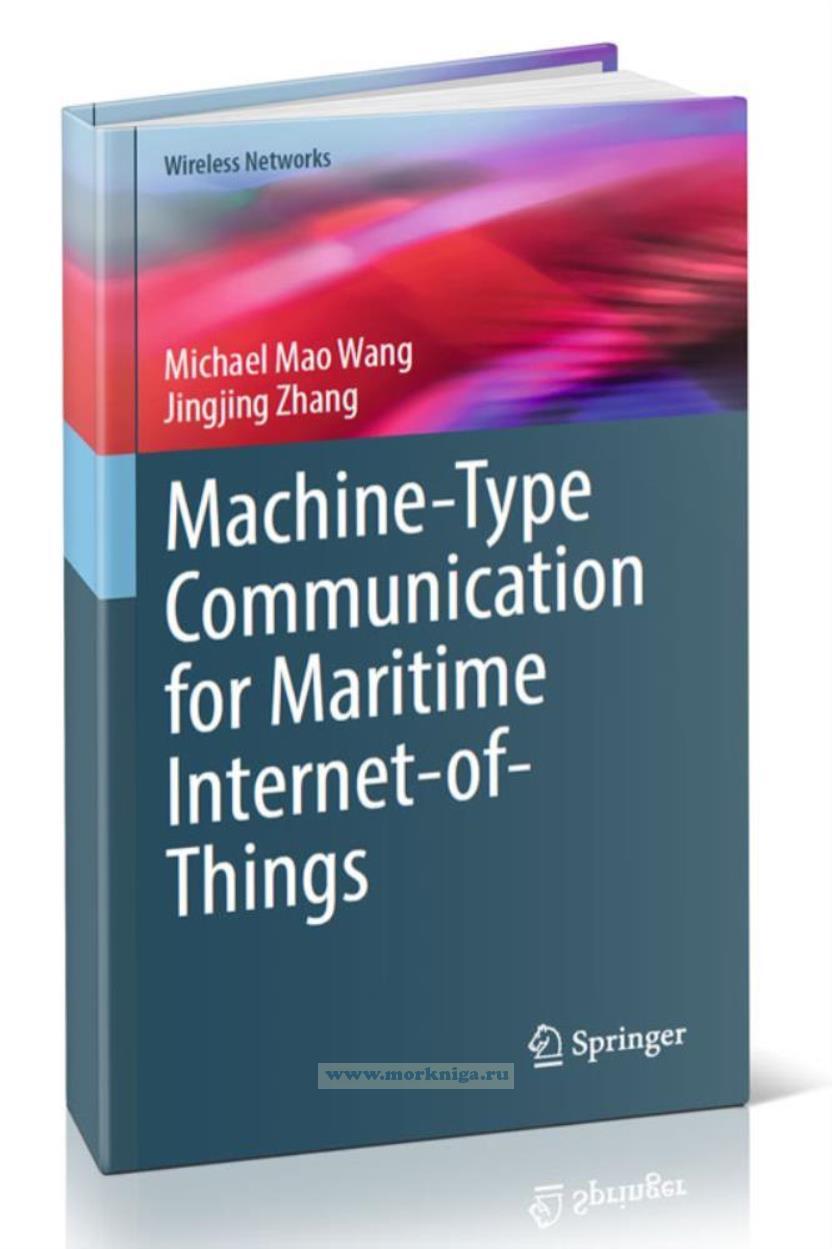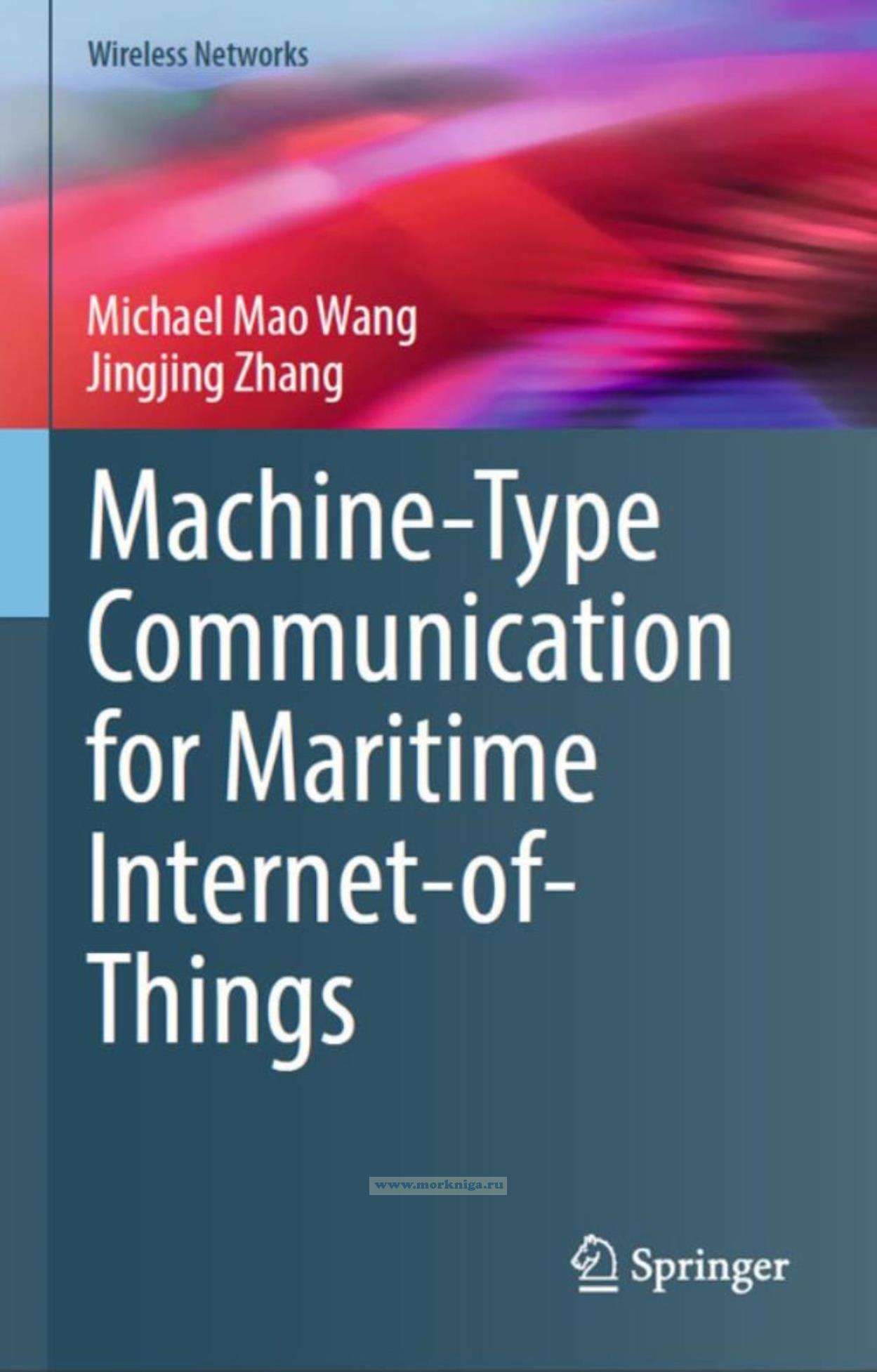Machine-Type Communication for Maritime Internet-of-Thing
Издание на английском языке
Internet of Things (IoT) can be viewed as a global infrastructure for the information society, enabling applications and services in the fields such as energy, health, and transportation by seamlessly interconnecting and integrating “things” into the information network. The IoT technology is expected to burgeon in the coming decade. The same situation abounds in the maritime domain, as manifested by the recent effort by the United Nations chartered International Maritime Organization (IMO) to modernize the maritime industry under the name “e-Navigation,” involving the harmonized collection, integration, exchange, presentation, and analysis of maritime information to enhance berth-to-berth navigation and related services for safety and security at sea as well as the protection of the marine environment.
Contents
1 Introduction
1.1 Maritime Internet of Things
1.1.1 Search and Rescue
1.1.2 Aid to Navigation
1.1.3 Ship Reporting
1.1.4 Vessel Traffic Service
1.1.5 Container Tracking
1.1.6 Route Exchange and Collision Avoidance
1.1.7 Smart Navigation and Environment Protection
1.1.8 Marine Environment Monitoring and Sensor Network
1.2 A Brief History of Maritime Communications
1.3 Maritime Machine-Type Communication
1.4 MTC Requirements and Challenges
1.4.1 Ubiquitous Connectivity and Service Continuity
1.4.2 Traffic Nonuniformity
1.4.3 Service-Centricity and Adaptability
1.4.4 Device Heterogeneity
1.4.5 Simplicity and Robustness
1.4.6 Capacity and Scalability
1.4.7 Interoperability
1.4.8 Radio Spectrum Internationality
1.5 Summary
References
2 System Architecture
2.1 Architecture
2.2 Communication Topologies
2.2.1 Ad hoc Communication
2.2.2 Infrastructure-Based Communication
2.3 Wireless Networks
2.3.1 Satellite Communication Networks
2.3.2 Terrestrial Communication Networks
2.3.3 Proximity Communication Networks
2.4 Applicability of Existing MTC Technologies
References
3 Protocol Structure
3.1 Protocols and Layering
3.2 Maritime MTC Protocol Structure
3.2.1 Network Layer
3.2.2 Data Link Layer
3.2.3 Physical Layer
3.2.4 Cross-Layer Optimization
3.2.5 Application Traffic and Control Traffic
3.3 Protocol Layer Channels
3.3.1 Socket Channels
3.3.2 Socket Group Channels
3.3.3 Logical Channels
3.3.4 Physical Channels
3.4 Protocol Layer Data Units
3.4.1 Network Layer PDU
3.4.2 Data Link Layer PDU
3.4.3 Physical Layer PDU
4 Network Structure
4.1 Functional Components
4.1.1 Network Controller
4.1.2 Maritime Application Server
4.1.3 Control Station
4.2 Control Plane and Application Plane
4.2.1 Control Plane
4.2.2 Application Plane
References
5 Air Interface
5.1 Transceiver Structure
5.1.1 Radio Waves and Spectrum
5.1.2 Antenna
5.1.3 Power Amplifier
5.1.4 Power Supply
5.1.5 Baseband and Passband Signals
5.1.6 Synchronization Source
5.2 Modulation
5.2.1 Phase and Amplitude Modulation
5.2.2 Frequency Modulation
5.2.3 Orthogonal Code Modulation
5.2.4 Single-Carrier and Multi-Carrier Modulations
5.3 Channel Coding
5.3.1 The Need for Channel Coding
5.3.2 Error Detection Coding
5.3.3 Forward Error Correction Coding
5.4 Adaptive Modulation and Coding
5.4.1 Spectral Efficiency and MCS
5.4.2 MCS Selection
5.4.3 Radio Link Condition and Feedback
5.5 Automatic Retransmission Request
5.5.1 Retransmission with Simple-Repetition
5.5.2 Circular Retransmission
5.6 Timing and Carrier Synchronization
5.6.1 Timing Synchronization
5.6.2 Carrier Synchronization
5.7 Mobile Station Categorization
5.7.1 Category 1 Mobile Stations
5.7.2 Category 2 Mobile Stations
5.7.3 Category 3 Mobile Stations
5.7.4 Category 4 Mobile Stations
References
6 Radio Spectrum
6.1 Spectrum and Interference
6.1.1 Spectrum Management
6.1.2 Interference
6.2 The Proximity Communication Spectrum
6.3 The Terrestrial Communication Spectrum
6.4 The Satellite Communication Spectrum
6.4.1 PFD Mask Derivation
6.5 Spectrum Sharing
6.6 FDD vs. TDD
6.6.1 VDE-TER
6.6.2 VDE-SAT
References
7 Proximity Air Interface Design
7.1 Medium Access for Proximity Communication
7.1.1 Random TDMA
7.1.2 Carrier-Sensing TDMA
7.1.3 Self-organized TDMA
7.2 AIS Air Interface
7.2.1 Transmission Burst
7.2.2 Data Frame
7.2.3 Pitfalls
7.3 ASM Air Interface
7.3.1 Network Layer
7.3.2 Data Link Layer
7.3.3 Physical Layer
References
8 Terrestrial Air Interface Design
8.1 VDE-TER for Terrestrial MTC
8.2 Network Layer
8.2.1 Radio Resource and Interference Management
8.2.2 Air Interface Configuration
8.3 Data Link Layer
8.3.1 Resource Block and Frame
8.3.2 MAC Protocols and PDUs
8.3.3 Transmission Procedure
8.4 Physical Layer
8.4.1 Physical Layer PDUs
8.4.2 Physical Channels and Bursts
8.4.3 Interference Mitigation
9 Satellite Air Interface Design
9.1 Waveform and Bandwidth
9.1.1 Waveform
9.1.2 Bandwidth
9.2 Resource Frame
9.2.1 Downlink
9.2.2 Uplink
9.3 Transmission Timing
9.3.1 Effect of Propagation Delays
9.3.2 Timing Advance
9.3.3 The MAC Timing Control Protocol
9.3.4 Timing for VDE-TER and ASM
9.4 TDD and Half-Duplex FDD
9.4.1 TDD
9.4.2 Half-Duplex FDD
10 Concluding Remarks
Index

